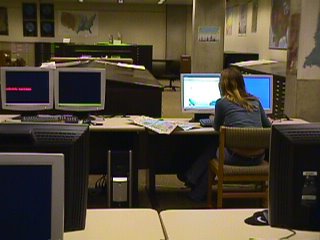 Just in Time for Holiday Shopping: Maps about Toys
Just in Time for Holiday Shopping: Maps about ToysMaps showing toy exports and imports are on display in the windows of the Geospatial Center & Map Collection. These maps, however, are created in a unique format, and the resulting images can be extremely informative. The maps were printed from the World Mapper website at http://www.worldmapper.org. According to the site, "World Mapper is a collection of world maps, where territories are resized on each map according to the subject of interest." The scientists and cartographers of the World Mapper team input data to create these unique maps. For example, the above map shows countries with the greatest amount of toy imports. The United States appears large on this map, while Africa, South America, and Asia are nearly nonexistent. The map of toy exporting countries shows nearly the opposite effect.
Maps and information on the site are continually updated, with new topics regularly added. The project is supported by the University of Michigan, the University of Sheffield, the Leverhulme Trust, and the Geographical Association. The methods and data have built upon the work of Michael Gastner and the United Nations, supplier of much of the data.
Maps on the site are available in pdf poster format for printing. These maps serve as an excellent resource for researchers on a variety of topics. The maps are convenient for inclusion in research papers on a related topic or as a visual aid for a presentation. Some of the topics mapped on the site include: meat exports, steel imports, water use, forest loss, nuclear power, meat consumed, teenage mothers, female managers, child labor, undernourishment, girls not at primary school, adult literacy, and HIV prevalence. Some topics soon to be added include tuberculosis cases, malaria cases, and women and men smoking. The topics depicted on the maps are varied, and the data is very current, so the maps are extremely relevant.
Check out the World Mapper maps on display in the GCMC window or on the project website. Contact the staff of the GCMC for more information about using maps as resources in research papers or as visual aids for class presentations. The Center is open Monday through Friday from 8:00 A.M. to 5:00 P.M.








